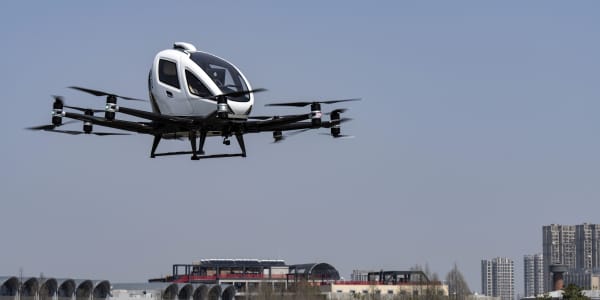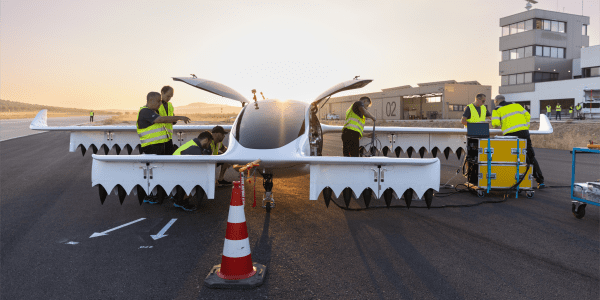In 2014 Chinese President Xi Jinping called for a "robot revolution" in manufacturing. It's now under way and boosting productivity, but there are adverse consequences.
After decades of growth, rising wages are consuming profits and pushing manufacturing to Southeast Asia. Shanghai's minimum monthly wage, for example, the highest in China, is 2,420 yuan (US$366.62), two and a half times what it was a decade ago.
"They realize you cannot just compete with cheap labor. You have to elevate the manufacturing capabilities as a whole," said Jing Bing Zhang, research director of market intelligence and consulting firm IDC.
An aging demographic also necessitates automation. China's working-age population, people age 15 to 64, is 998 million. It started declining in 2014 and could drop to 800 million by 2050.
According to the International Federation of Robotics, China added 87,000 industrial robots in 2016, slightly below Europe and the United States combined. Chinese growth is forecast to exceed 20 percent annually through 2020.
One example is massive iPhone producer Foxconn, officially known as Hon Hai Precision Industry. Between 2012 and 2016, Foxconn's operating revenues increased slightly, but its headcount declined by almost one-third. More than 400,000 jobs were eliminated as tens of thousands of "Foxbots," factory robots, were deployed. Foxconn is targeting 30 percent automation by 2020.
Droids spray, press, assemble, disassemble, weld, package and track goods. They work 24-7, don't require holidays and do as programmed. They increase efficiency, improve quality and reduce risk.
Chinese companies not only adopt robots, they also manufacture them. A national campaign, Made in China 2025, encourages automated processes and intelligent manufacturing. Last summer Premier Li Keqiang called on domestic companies to make more robots. With local and national government funding and policy support, approximately 3,000 robot makers or solutions providers launched between 2014 and 2016.
"The focus now is to encourage innovation, encourage development of automation and robotics technologies. And also encourage manufacturing companies to adopt robotics in the production line," Zhang said.
Beijing-based Geekplus Robotics develops logistics and warehousing applications, which e-commerce sites, manufacturers, express deliverers, supermarkets, retailers and pharmaceutical companies use to sort, pick and move inventory.
Instead of having "pickers" running around warehouses scouring for goods, which companies traditionally do, Geekplus' 3-foot-long bots carry boxes of goods to stationary human operators. This slashes human exertion and retrieval time. According to Geekplus, their systems reduce headcount needs by 50 percent to 80 percent and floorspace by 30 percent.
Reportedly, profit per worker at Chinese auto firms in 2016 was $48,000. In South Korea, which has a much higher robot density, it was $152,000.
Geekplus has seen increased demand over the last year. "Manufacturing is always pursuing some new tech, some new automation," said marketing vice president Yunfan "Jason" Gao. Founded in 2015, Geek Plus now has 400 employees.
Robotic prices and functionalities vary. For a typical 5,000 square meter warehouse, with 50 to 100 robots, Geek Plus systems cost between 6 million and 15 million renminbi (USD $950,000 to $2.37 million). Most clients recoup upfront costs after a year or two.
According to survey by media group Dentsu Aegis Network, Chinese citizens are the world's most optimistic about artificial intelligence's impact on their lives and jobs. Over the coming decade, almost two-thirds of respondents believe robotics and AI will create jobs, not erase them.
A reimagined workforce
Not all jobs, however, will be spared. According to World Bank research, automation could threaten 77 percent of Chinese jobs. In 2010, China became the world's largest manufacturer, displacing the U.S. Roughly one-fourth of global goods are made in China.
"Training would be needed to create new jobs and new skills," said Jenny Chan, Assistant Professor at The Hong Kong Polytechnic University.
According to Chan, China has acute income inequality, and machines may exacerbate it, creating instability. Chan worries about lower income, lower educated workers. "I'm really concerned about social inequality," she said.
To combat this, Cai Fang, vice-president of think tank Chinese Academy of Social Sciences, advocates taxing worker bots to fund affected workers' social security programs. "We must cap the speed and restrict the direction of robotics' development to avoid any bad effects on human beings," he was quoted as saying.
"The government needs to take action early to think about and plan out how the society, the country, the government as a whole can help those who are losing their jobs," Zhang said.
Policymakers recognize this. By 2020, China's Ministry of Education plans to enroll 23.5 million students into three-year vocational programs designed for the new economy. According to Chan, many Chinese universities are also adapting their business curriculums.
Although robots perform numerous tasks, adaptable humans are needed to code, monitor, regulate, maintain, and repair machines. "Human workers are still needed because they are more responsive," Chan said.
Employees may only be needed part-time, though. "Those who have the knowledge and know-how, they might benefit from the fact that they do not have to do nine hours of work , five or six days per week," Chan said. Other tasks, such as warehouse and assembly-line monitoring, could be done remotely.
A wave of automation
Chan said interns — who work up to one year, are less expensive than full-time employees, have comparable productivity levels and don't accrue benefits — will play larger roles in China. "They are the reserve army. They are young. They are productive. And they have to finish their internship. Otherwise, they cannot graduate," she said. She said, however, that they do not always receive the same protections that other workers do.
Although many companies have embraced automation, it's in nascent stages. According to IFR data, in 2016 South Korea had 631 installed robots per 10,000 manufacturing employees. The United States had 189. China only had 68.
Over the next five to 10 years, Zhang expects that most companies will be structured differently. "Automation is something you cannot stop," he said.





